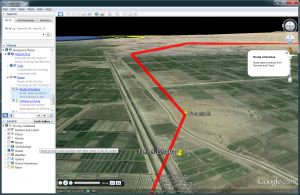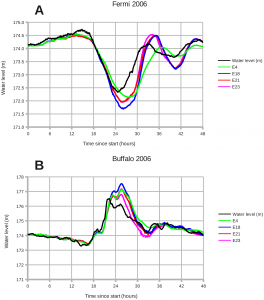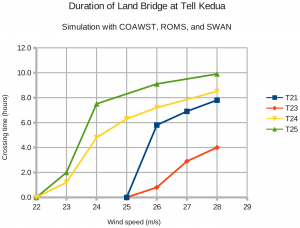I have published another peer-reviewed article on the Hebrew Exodus from Egypt and Moses crossing the Red Sea. The citation is:
Drews, Carl, Examining Exodus 14 with the Geosciences (2015). Near East Archaeological Society Bulletin (NEASB) Volume 60, pages: 1-15.
Here is the Abstract:
There are similarities between the physical details described in the Exodus 14 narrative of the parting of the Red Sea, and a wind setdown event in the eastern Nile delta. This publication takes the ocean model results reported by Drews and Han in 2010 and places them in a biblical, archaeological, and historical context. Certain biblical and archaeological research also supports a crossing at the Kedua Gap or possibly at Tell Abu Sefeh. The proposed locations are within 10 km of a place identified as Migdol by several biblical scholars. Four possible crossing sites are evaluated with respect to the biblical text, and what they might imply for the route of a Hebrew exodus from Egypt during the New Kingdom period. The scientific plausibility of the ancient account suggests that Exodus 14 preserves the memory of an actual historical event.

Detail of Figure 3, showing the approaches to the four crossing sites. Drews, Carl, Examining Exodus 14 with the Geosciences (2015). Near East Archaeological Society Bulletin (NEASB) Volume 60, pages: 1-15.
A few important conclusions:
- Exodus 14 holds up well under modern scientific examination.
- The meteorological details given in the text are supported by ocean models and observations of similar events that have occurred in modern times.
- Analysis of the current flow and grain size within the Kedua Gap reveals that Moses and the Israelites would have been walking across coarse sand instead of wallowing in deep mud.
- The biblical narrative requires knowledge of Egyptian topography and meteorology that would be difficult to acquire without spending decades in that country.
- The historical interplay between the narrative in Exodus 14 and the “Song of the Sea” in Exodus 15 may be resolved by distinguishing between the ancient content present in both chapters, and the archaic language of Exodus 15.
To obtain a copy of the paper, please contact the Near East Archaeological Society.








